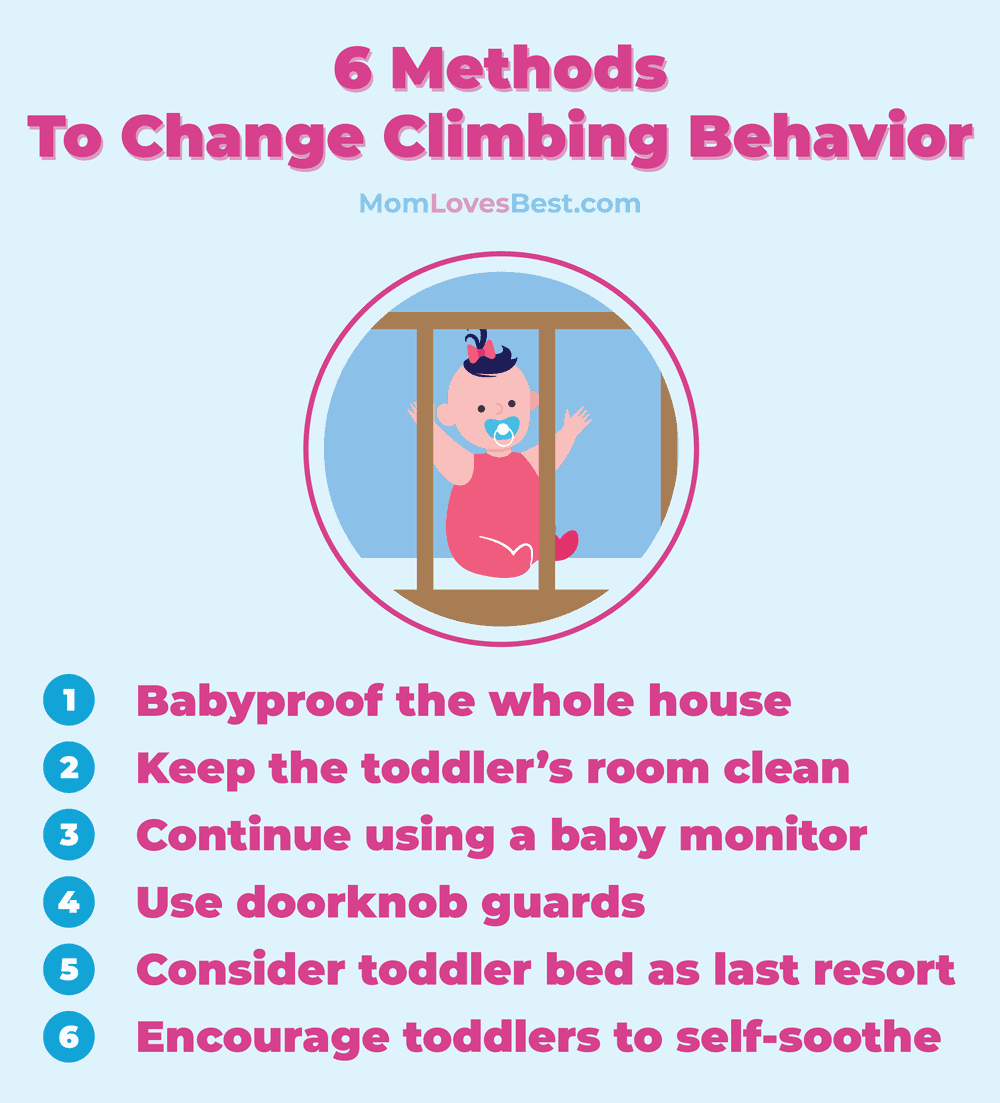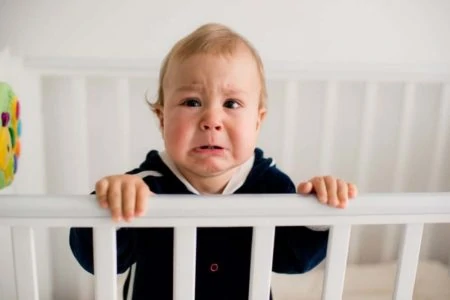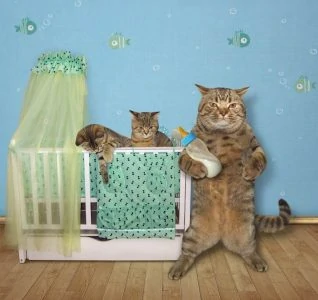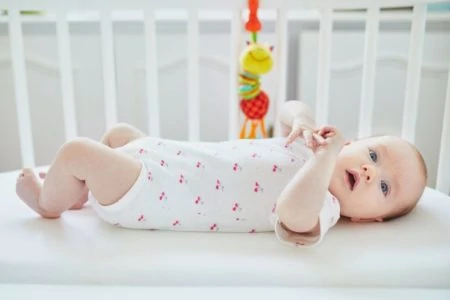Do you have a climber getting dangerously close to escaping their crib? Or perhaps they have already tumbled to the floor?
We have been there. We understand that fear and the guilt associated with a little one taking a tumble.
Before you make a rash decision to dismantle the nursery, let’s look at tried-and-true methods for keeping busy toddlers safe. We will cover when to consider a toddler bed, how to make bedtime easier, and how to gently correct climbing behavior.
Like any other behavior, crib climbing is a habit you can catch and correct with patience and the right tools.
Key Takeaways
- Wait until age 3: Keep toddlers in a crib as long as possible to promote impulse control and better sleep habits.
- Modify the crib: Lower the mattress to the floor setting, turn the high side outward, and remove climbable clutter.
- Use tools: A toddler sleep sack restricts leg movement, making it physically difficult to swing a leg over the rail.
- Be consistent: Establish a rock-solid bedtime routine and use the “silent return” method if they escape.
When To Use a Toddler Bed
Many parents jump right into putting their toddlers in a “big kid bed” after that first terrifying fall or when the child shows signs of attempting a great escape.
It might seem like the logical next step, but experts generally recommend keeping toddlers in a crib until they are at least 3 years old. Waiting helps promote positive sleeping habits and teaches your child to stay in their designated sleep space.
The problem with rushing a toddler into a bed is that it becomes harder to keep a curious kid contained. Without the rails, they have free rein of the room (and the house), making it difficult to teach boundaries.
1. See It as a Lesson
Toddlers who climb out of their cribs aren’t usually being naughty; they are just curious and testing physical limits. They don’t inherently know that climbing is dangerous or “wrong.”
You can change these behaviors with the right teaching methods. It is frustrating when 3 a.m. rolls around and your little one is trying to leap from the railing like a pro wrestler, but patience is key.
Address the issue immediately. If you are consistent, your child should learn to stay in their designated sleeping spot quickly.
2. Build a Bedtime Routine
Staying in the crib helps establish familiar bedtime routines. The crib is a safe, contained zone. Toddlers don’t always understand the concept of a “big kid bed” and the responsibility that comes with it (staying put).
By sticking with a familiar place of rest, you can implement a schedule that helps make your toddler’s eventual move easier.
Once you have successfully introduced a solid routine, you can start talking about the transition. Getting them excited in advance can make the transition to a bed smoother when the time is actually right.
Bedtime Tip
How Do I Keep My Toddler in the Crib?
You decided to keep your toddler in the crib, but how do you survive the climbing phase?
When you first notice your toddler attempting a breakout, check these four things immediately:
- Mattress settings: With most cribs, you can adjust the mattress height. Put your toddler’s crib mattress on the lowest possible setting to prevent them from getting leverage. Do this as soon as they can pull themselves to a standing position.
- Remove toys and pillows: Children shouldn’t have pillows or large plushies in the crib. Aside from SIDS risks in infancy (read more here), toddlers use these items as step stools. Keep the crib bare (1).
- Turn the crib around: Some cribs have a back panel that is higher than the front. If the back is higher, turn the crib around so the low side faces the wall and the high side faces the room. This removes their easiest escape route.
- Separate your kids: If you are a multi-child household, a bored sibling might be the accomplice to your toddler’s escape. Separating sleep spaces provides fewer distractions and helps everyone settle down faster.
4 Ways To Change Climbing Behavior
If you have passed the initial preventative measures and still find your toddler giving it their all to escape, don’t despair. There are ways to encourage a positive mindset toward staying in bed.
Try these tips for adventure-hungry kiddos.
1. Adjust Their Bedtime
As toddlers grow (ages 1 to 3), their internal clocks change. Your restless toddler might be climbing simply because they aren’t tired enough.
Document when your toddler actually falls asleep versus when you put them in the crib. Adjust your schedule to reflect their biological needs. If they lay awake for an hour, push bedtime back by 15 or 30 minutes.
Conversely, you might be putting them to bed too late. Overtired children have a harder time falling asleep and often exhibit hyperactive behavior. Ideally, aim for a bedtime between 7:30 p.m. and 8:30 p.m. (2).
2. Try a Toddler Sleep Sack
You likely know the benefits of swaddling infants, but consider extending the practice.
Introducing a toddler sleep sack to an avid climber is often the “magic bullet.” These wearable blankets enclose the legs, which physically prevents the toddler from lifting their leg high enough to swing it over the crib rail.
If your toddler is a Houdini with zippers, put the sleep sack on backward (zipper on the back) or inside out.
3. Only Use the Crib for Sleeping
Avoid using the crib as a “baby jail” for time-outs or punishment. If you put your child in the crib when they are angry or wide awake during the day, they will associate that space with frustration.
By making the crib a place for sleep and only sleep, you create a positive association. When you eventually move to a bed, this respect for the sleep space will carry over.
4. The Silent Return
If your toddler climbs out to get your attention, reacting with big emotions (even negative ones) reinforces the behavior.
Instead, use the “silent return” method. When they climb out, calmly pick them up and place them back in the crib without making eye contact, talking, or negotiating. Repeat this as many times as necessary. It is exhausting the first few nights, but it sends a clear message: climbing out results in a boring return to bed.
6 Methods if You Have a Climber
Before you relax, prepare for a relapse. Once a climber, always a climber. You must maintain safety measures even if the behavior seems to have stopped.
1. Babyproof the Whole House
If your child is a skilled escape artist, don’t assume they will stay in their room if they get out of the crib. Your little Houdini needs a fully babyproofed home.
Install baby gates at the top of stairs, secure electrical outlets, and anchor heavy furniture to the walls.
2. Keep Your Toddler’s Room Clean
Minimize clutter inside the crib and keep the surrounding floor clear. Toddlers are naturally curious and will be drawn to toys left within eyesight.
If you store toys out of sight or in a locked closet at night, the temptation to explore vanishes.
3. Continue Using a Baby Monitor
A good video baby monitor is essential. Many modern monitors have a “talk back” feature.
If you see your toddler throwing a leg over the rail, you can use the microphone to firmly say “No” or “Lay down.” Often, just knowing you are watching is enough to stop them mid-climb.
4. Use Doorknob Guards
Doorknob covers are a lifesaver. By placing a safety cover on the inside of the bedroom door, you ensure that even if they escape the crib, they cannot wander the house unsupervised.
This essentially turns the entire bedroom into a giant crib. It is much safer for a toddler to fall asleep on the carpet of a babyproofed room than to wander into the kitchen at 2 a.m.
5. Consider a Toddler Bed (Last Resort)
If your toddler is over 18 months old and climbing out despite sleep sacks, lowered mattresses, and behavioral correction, safety must come first. If they are in danger of hurting themselves, it is time to switch.
You can convert the crib or move the mattress to the floor to eliminate the falling risk.
6. Encourage Self-Soothing
Toddlers who have trouble falling asleep often lack self-soothing skills. If your toddler makes demands or throws tantrums at bedtime, they are looking for interaction.
Use a “gradual retreat” method. Sit by the crib but do not engage. Move your chair further away each night until you are out of the room. This teaches them they are safe, but that it is time to sleep, not play (3).
How To Make Bedtime Easier
If your family is anything like ours, nighttime is the most stressful part of the day.
Making bedtime easier should be a priority. Establishing a simple routine as soon as possible makes future transitions much smoother.
Start by sticking to a schedule. Picking your battles is important, but bedtime should be a non-negotiable family rule. Children actually crave routine because it makes them feel safe.
Try these quick tips:
- Use a “Toddler Clock”: These clocks change color when it is time to wake up. It gives them a visual rule to follow.
- Burn energy early: Ensure they get plenty of physical activity during the day so they are physically tired at night.
- Wind down: Turn off screens at least an hour before bed. Blue light interferes with melatonin production.














